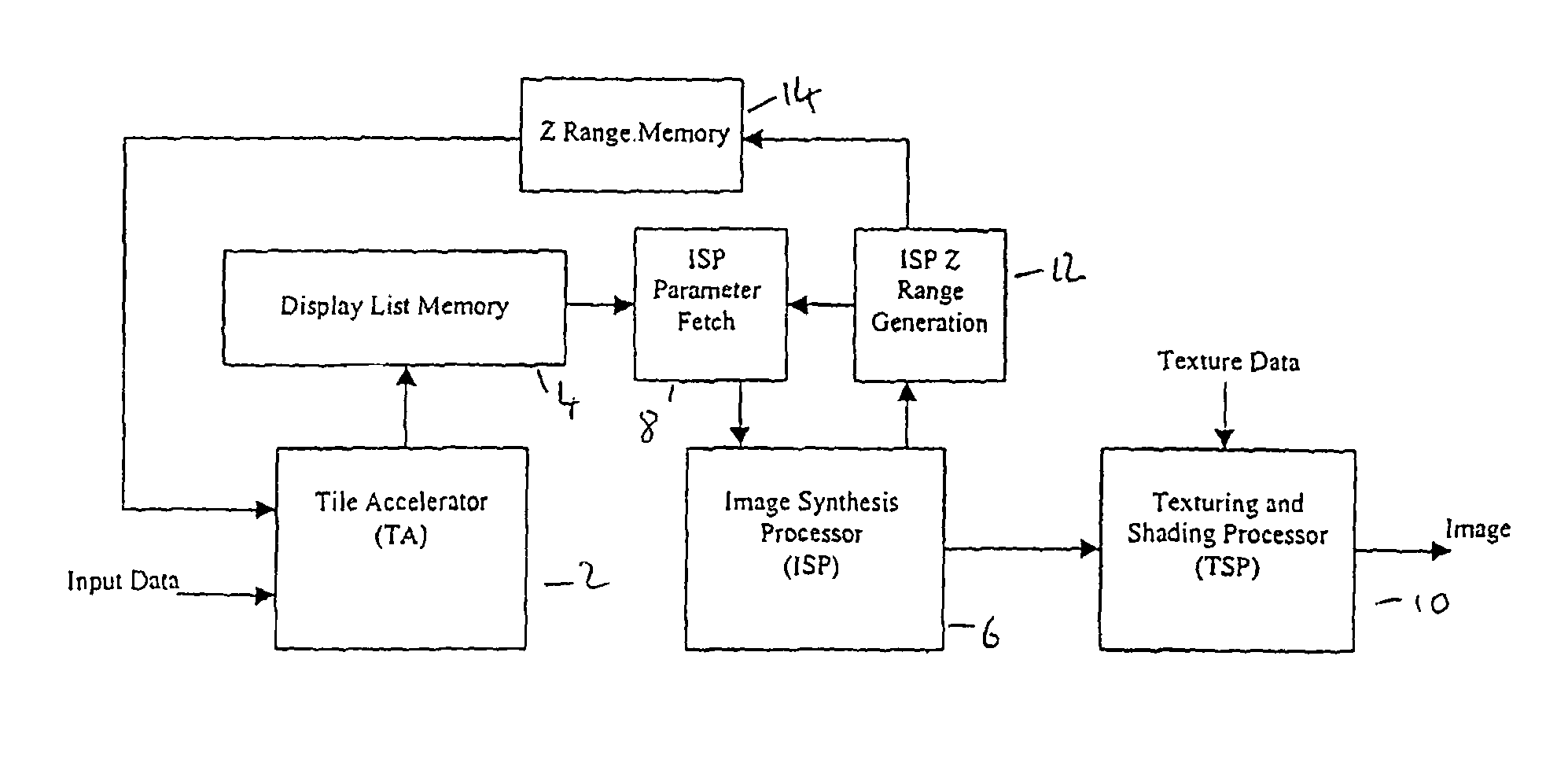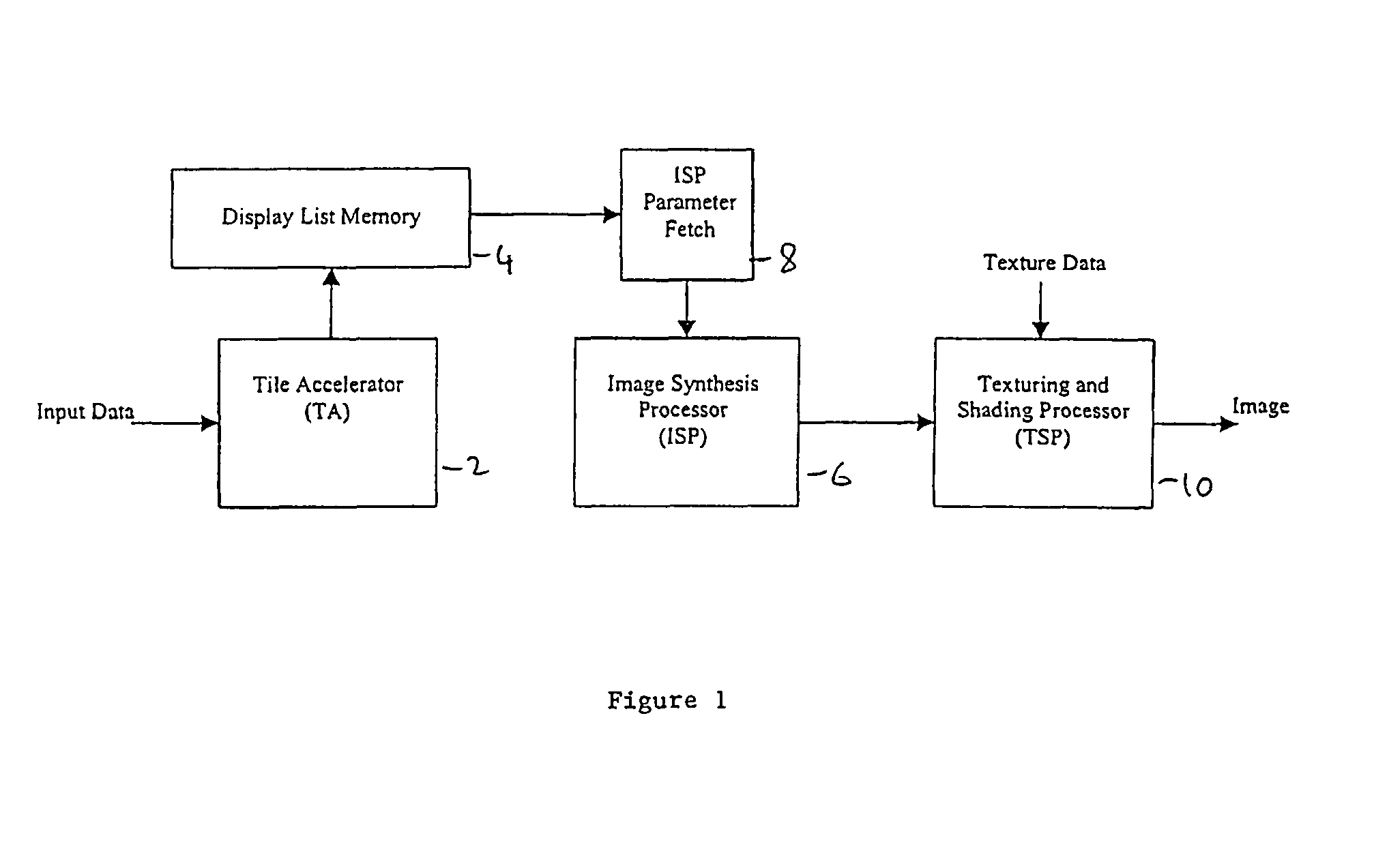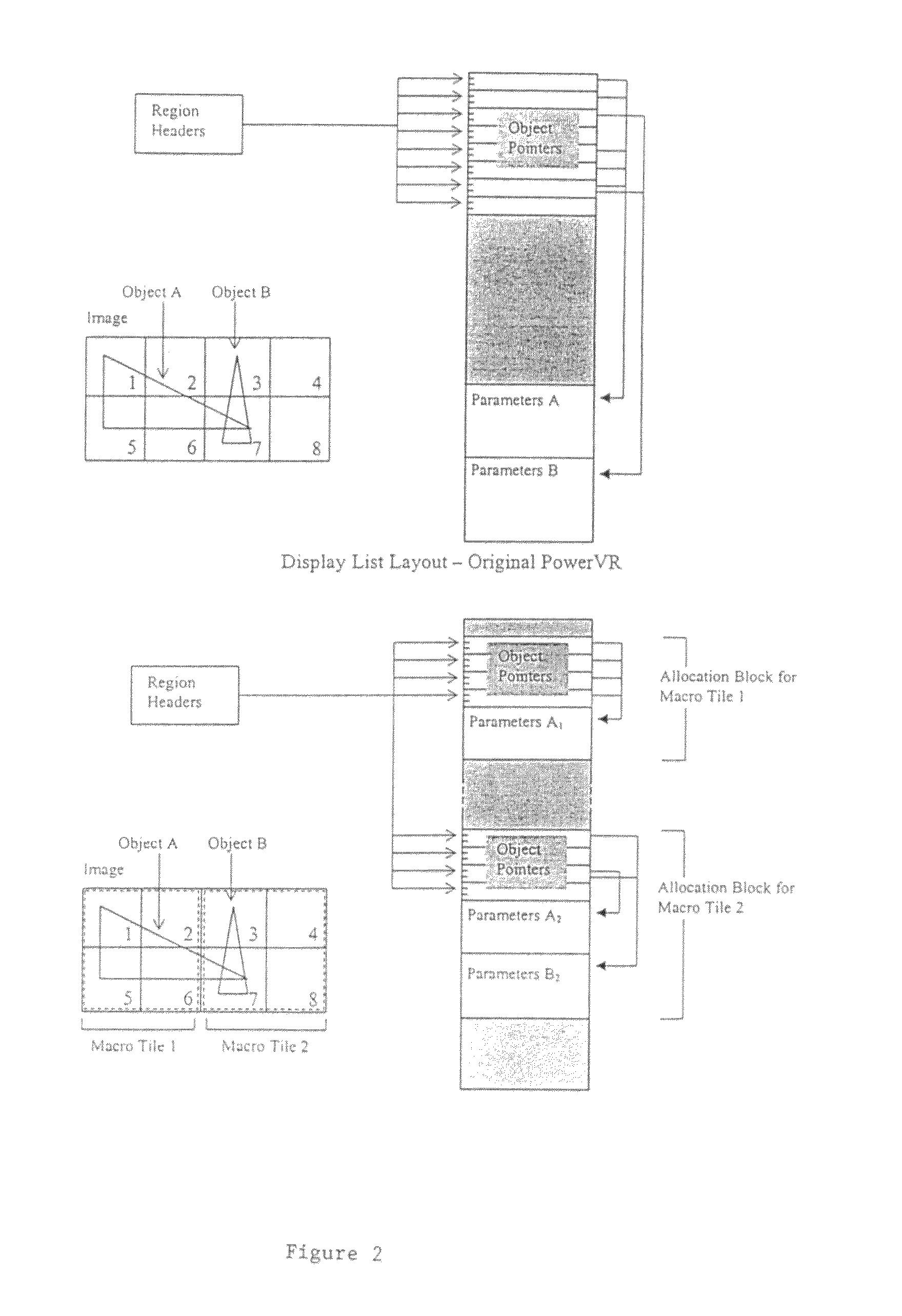Three dimensional graphics system with early occlusion culling using Z-ranges
a computer graphics and z-range technology, applied in the field of 3d computer graphics systems, can solve the problems of limiting the rate at which data can be read or written, the complexity of images being rendered has increased considerably, and the memory bandwidth is also a scarce resource, so as to reduce the amount of data written into the display list memory, the effect of reducing the input bandwidth and reducing the amount of data written
- Summary
- Abstract
- Description
- Claims
- Application Information
AI Technical Summary
Benefits of technology
Problems solved by technology
Method used
Image
Examples
Embodiment Construction
[0028]FIG. 4 is an expanded and modified version of the block diagram of FIG. 1. The ISP Z range generation unit 12 computes the range of Z values stored in the ISP 6 and feeds it back to the first stage of culling, located in the TA2, via the Z range memory 14. A second feedback path sends Z range data to the second stage of culling, located in the ISP parameter fetch unit 8.
[0029]ISP Range Generation
[0030]The embodiment described uses a range of depths that represent the minimum and maximum depths of the objects stored in the ISP 6. This range is computed in the ISP as objects are processed, and represents the actual range of depth values that are stored in the tile at that moment. This range has to be updated constantly, as stored values are continually being replaced and the range may grow and shrink as the scene is rendered. FIGS. 5a) and b) show respectively before and after a situation in which an incoming object is rendered into the pixels which previously determined the max...
PUM
 Login to View More
Login to View More Abstract
Description
Claims
Application Information
 Login to View More
Login to View More - R&D
- Intellectual Property
- Life Sciences
- Materials
- Tech Scout
- Unparalleled Data Quality
- Higher Quality Content
- 60% Fewer Hallucinations
Browse by: Latest US Patents, China's latest patents, Technical Efficacy Thesaurus, Application Domain, Technology Topic, Popular Technical Reports.
© 2025 PatSnap. All rights reserved.Legal|Privacy policy|Modern Slavery Act Transparency Statement|Sitemap|About US| Contact US: help@patsnap.com



